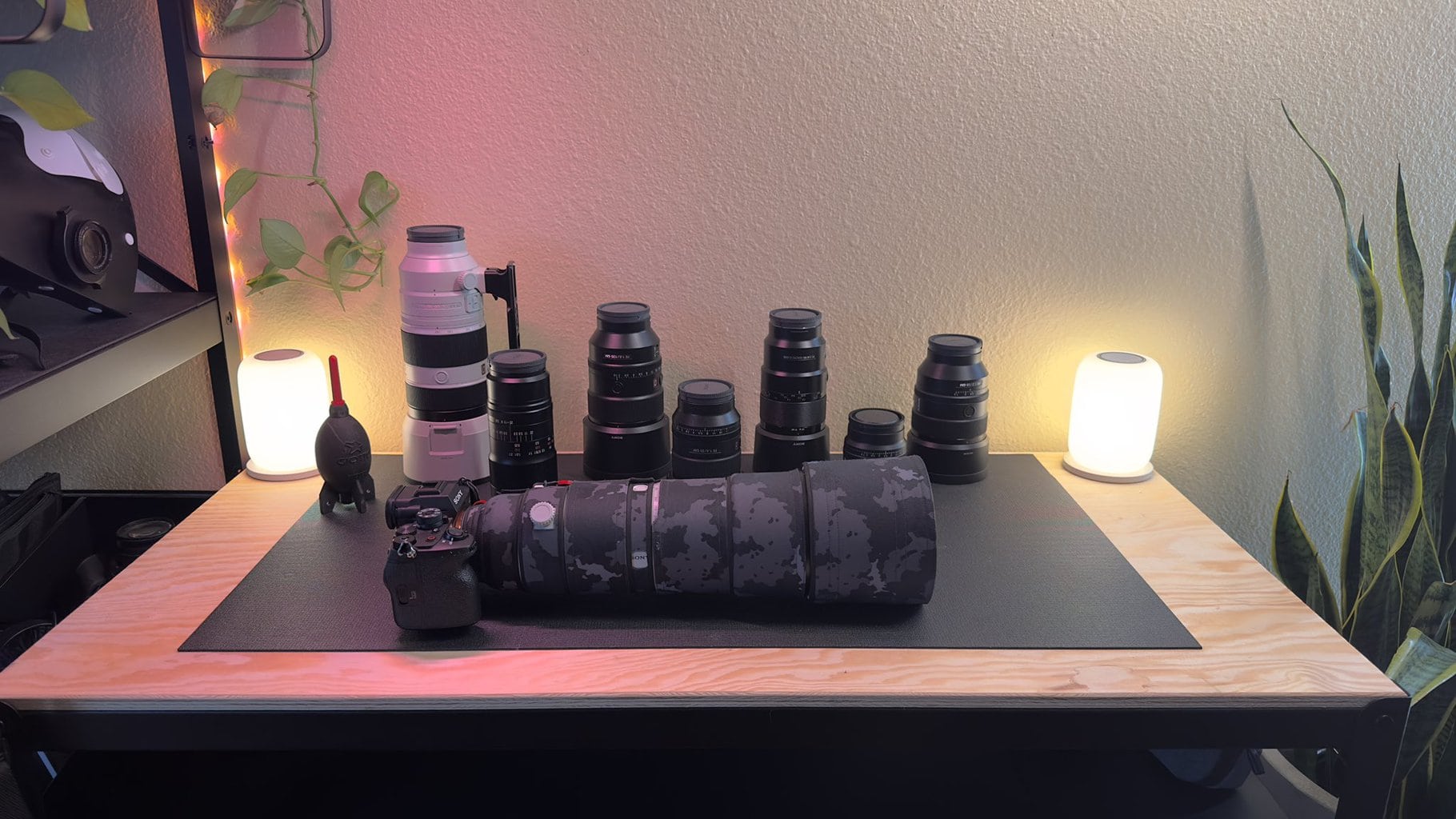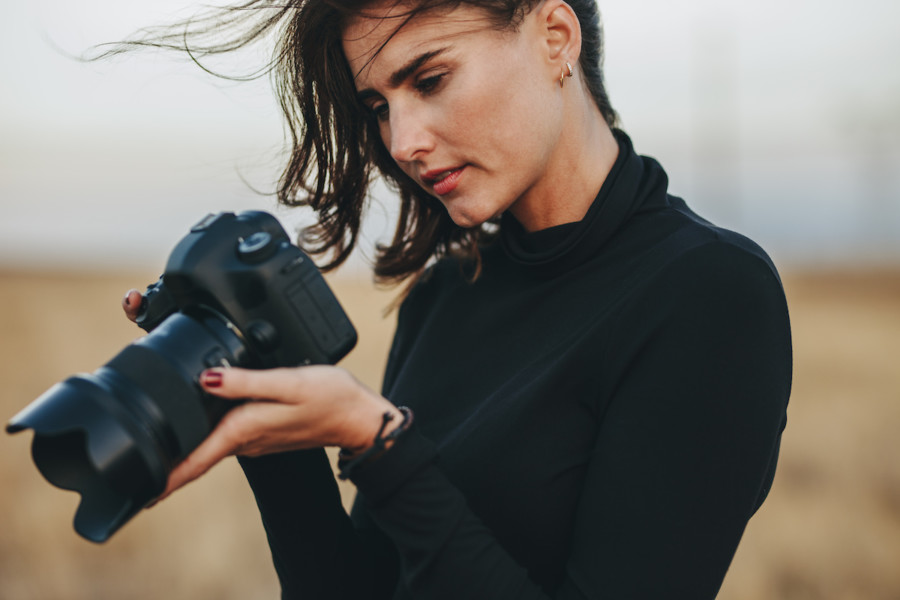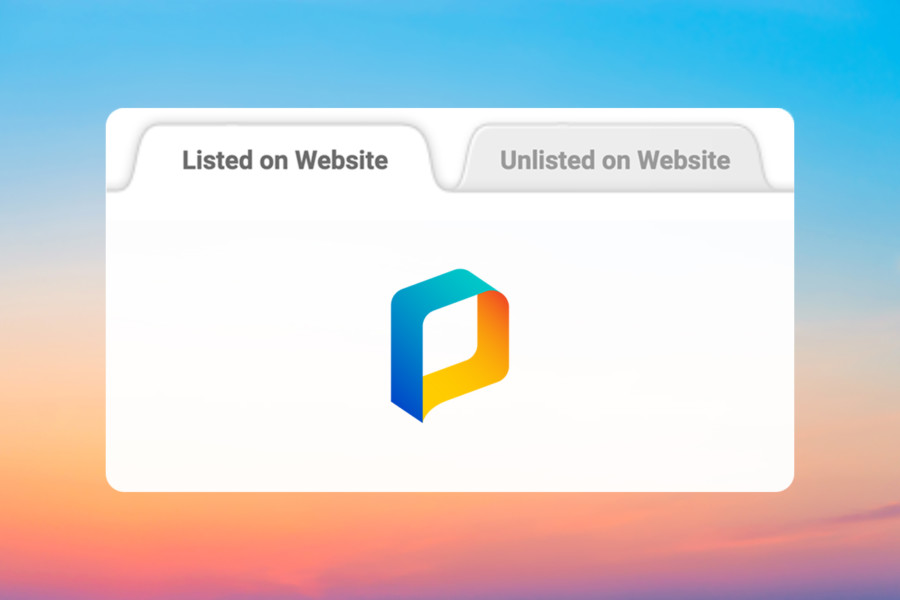Share
Celebrating Earth Day Everyday: A Twitter Space Show and Tell with Wildlife and Landscape Photographers
Social media is a great way for photographers to connect with other creatives from all walks of life. You can easily share stories, support each ot...
Social media is a great way for photographers to connect with other creatives from all walks of life. You can easily share stories, support each other, and learn from one another, no matter where you are in the world, or the stage of your personal or professional journey.
We love bringing photographers together and hearing about the work they’re producing, their unique backgrounds, and why they’re passionate about the work they create. That’s why we hosted another Twitter Space with a few photographers we admire.
This time, we connected with wildlife and landscape photographers to celebrate Earth Day. We went live on Twitter and brought together a handful of people from our photo community for an inspiring and surprisingly educational discussion.
Listen to our full chat below, and read on for the highlights – including a great candid conversation about protecting the beautiful places and wildlife we photograph, advice for aspiring photographers, and gear preferences from our featured guests.
Cover images courtesy of Tom Schillinger, Sophie Carr and Brandon Guell.
We had the pleasure of speaking with three very different, very passionate photographers based in different locations around the world: San Diego in California, Iceland, and Boston in Massachusetts.
Meet Tom Schillinger, Sophie Carr and Brandon Guell.
When planning for our talk, we asked each of these photographers to select a few photos to share and discuss. Take a look at the photos they selected below and listen on to hear the story behind each image. Then follow these photographers on social media to see more of their work!
Let’s talk about how we as photographers can protect the species or the places we interact with. What are your thoughts on the invasiveness of photographing nature and how we can avoid it?
Brandon: I have a lot of thoughts on the matter, to be honest. In my work, I collect adults, eggs and embryos. I collect different species of snakes, I run experiments, I collect samples, and I do all of these things under the necessary permissions and permits from the residing national governments and different institutions. All of these things are done very well, but it gives me this different access to potentially photograph animals in these unnatural contexts. And despite having that very easy access, I don’t do that.
So the photos I’ve shared today and pretty much every photo that I’ve really published or shared has never been in that context, because I’m very adamant about shooting wildlife in natural contexts and natural spaces with minimal disturbance. That’s something that I just adhere to, it’s something that I really enjoy, and I think it also makes photography as a concept more interesting. And as a practice, it makes it more thrilling and also more challenging, too.
Sophie: Yes, it’s quite interesting because I’m not really a wildlife photographer. But I do come across wildlife from time to time… and you’re always in a bit of a quandary as to how far you should be, how close you should get.
Iceland obviously has a huge number of tourists who travel all over the country and a lot of them don’t have the same kind of ethical standards on protecting the land… But I try to leave as little of an impact as I can, and as a landscape photographer I think it’s important to try and do that too.
Check out our dedicated interview with Sophie Carr about exploring and photographing Iceland.
Tom: I love using telephoto lenses because I’m really torn apart, to be honest, with this whole wildlife discussion.
I think it’s okay to feed animals to a certain degree or to lure them into a certain position to get a nice shot if you’re really careful and not invasive… but all of these trips that people are doing where I see 100 photographers line up to photograph penguins because it’s an organized event… I don’t know, I cannot resonate with that. I’d rather step back and I’m actually the one 50 meters behind the seals here in the ocean while tourists are going up close and almost touching them.
And it kind of gets me mad because it doesn’t bring anything other than having a cheap shot for invading nature in a way that’s not healthy… then this stuff goes on Instagram and people like it. I don’t know, it’s weird.
Tell us about your go-to gear. What type of camera equipment do you keep in your bag or bring with you when photographing nature?
Brandon: The first couple years that I was getting into photography, I was only working with two lenses. I’m on Canon and my first camera was a 5D Mark III, which is a fantastic camera. The lens I like to use the most is the 100mm macro lens. It is just an amazing lens. It’s because most of the photography that I enjoy is just getting really close. A lot of my work, and a lot of the photography I like to do, is at night. So I do a lot of off-camera handheld flash photography in combination with this macro lens and that just gives you so much flexibility with where to put the light.
I actually don’t think any of these pictures that I shared today were taken on that lens, but a few of them were taken with the other lens I started off with, which is just a nifty fifty, a 50mm from Canon. It’s an overall go-to lens, really fast, really light.
I started out with those for a long time and over the years and more recently, I’ve picked up some bigger telephoto lenses, which I have enjoyed using for when I photograph other types of animals. But for me, macro photography is what I enjoy the most and I really would not recommend any other lens on the camera systems than the 100mm macro.
Tom: I love the Sony A7RV for the resolution obviously, but it’s also a perfect hybrid between my wildlife and macro work. The autofocus is absolutely insane for fast moving wildlife and the 60MP is just perfect for my macro work.
The Sony 100 – 400 4.5 – 5.6 OSS GM is one of my favorite lenses due to the focal range of course, but also for macro. With its minimum focus distance of just 1m, you can get incredibly close to the subject while maintaining enough distance to not scare away sensitive lifeforms.
The Sony 200-600 5.6 – 6.3 OSS G is the ultimate wildlife lens, and the Laowa Ultra Macro 2:1 2.8 is my go-to macro lens.
As for drones, I use a DJI Mavic 3 with the Polar Pro Lens kit.
And for my tripods, I have the RRS TFC-24 MK2 Series2 Ultralight Carbon Fiber Tripod and the RRS TVC-34 Versa Series 3 Mk2 Carbon Fiber Tripod. The TFC is my absolute favorite tripod I have used by far. Especially since it is super easy to clean and service. The TVC-34 is basically the same as the other but offers the needed sturdiness to support my big tele lenses.
Tom told us about a handful of other lenses too! Check out a photo of his lens gallery below and follow him on Twitter (@pixonoid) to see more of the images he creates with his gear.

Sophie: I use a Canon 5D Mark IV, I haven’t moved onto mirrorless yet… A few years ago I bought a 100-400 mm lens and it’s pretty much the lens I use the most. A lot of landscape photographers are a bit more traditional and use wide angled or medium length lenses, but I really like getting closer to the landscape with the reach that the 100-400mm gives you. I’ve also got an extender so it goes up to 560mm, so I can get quite close.
That lens is probably the one that I can’t really do without now, even though it’s ridiculously heavy and bulky. The wide angle I occasionally use – there are certain views in Iceland where you need a wide angle. But generally, the zoom or the telephoto is the one that I really really like to use. I think it allows you to get a bit more creative as well.
What advice would you give to fellow or aspiring photographers?
We love sharing words of encouragement, tips from the pros and uplifting messages from photographers to their peers. What would be your go-to advice for fellow or aspiring photographers? Tag us on Twitter (@photoshelter) and let us know.
Sophie: The one piece of advice I’d always give to people is to be extremely hard on yourself when you’re editing. I think one of the mistakes I made when I was much younger and didn’t have very good photography equipment was that I would just settle with something that wasn’t completely sharp. I didn’t really question what was wrong with it, I just kind of set it and was a bit disappointed.
But I think by looking into your images and really looking to see where the faults are, you can work out what you need to improve.
Don’t just settle… Make sure you review your work and then try and work out how you can improve it. It’s not always an easy thing to be critical of your own work, but I think it’s important to do so.
Sophie Carr
Brandon: I think being curious about how to improve yourself is just an amazing trait, no matter what you’re doing. One of the best things that you can do if you really want to improve your photography is question yourself. Really being intentional with your investments, your practice, your time, your effort, your money, etc. I think that’s all very valuable.
But on a different note, what I would tell a budding wildlife photographer is… regardless of what kit you’re using, the good shots, in my opinion, are the ones where it wasn’t because of the gear you were using. It was because of where you were standing, how long you waited, and what you were shooting.
I don’t think that to get amazing wildlife captures you need to go to ‘exotic’ places that are very hard to get to and expensive to get to. I think you can get amazing wildlife pictures of common species and common places with unique perspectives. And a lot of times those unique perspectives and photographable moments and behaviors come from getting incredibly uncomfortable.
Tom: I try to see the world from a different perspective than what humans normally see. Landscape with a telephoto, drone from the sky, macro as low as possible.
Isolating subjects with strong bokeh or with a telephoto zoom separating your subjects from the surrounding creates something special that is not perceivable with the naked eye.
I believe that beauty is all around us, you don’t always need to travel to the most exotic places or famous locations to create something unique, something beautiful.
Want to join us next time we host a Show and Tell Twitter Space? Follow @photoshelter on Twitter and stay tuned for our next conversation!


